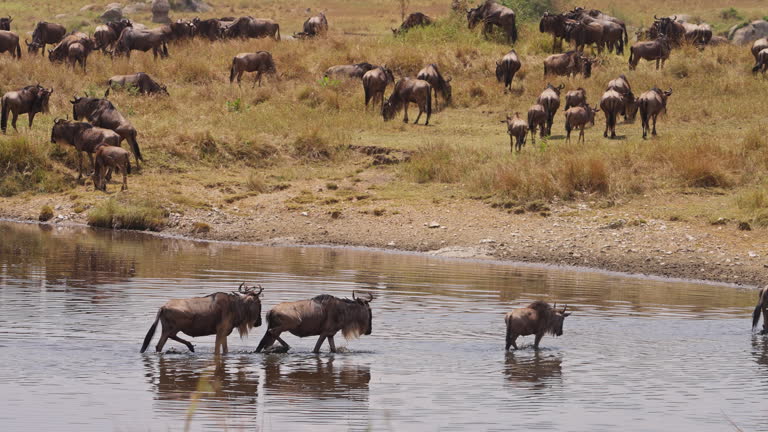Africa - Tanzania Safari Operator
Arusha - Moshi Tanzania
The Central Serengeti herd movement April 2026-2027 marks the transitional phase of the Great Migration. After the calving season in Southern Serengeti and Ndutu (January–March), the wildebeest herds start moving northward in April. This movement is dramatic, with hundreds of thousands of wildebeest, zebras, and gazelles heading toward the greener pastures of the Central Serengeti. Travelers who visit during Central Serengeti herd movement April 2026-2027 will witness massive herds crossing woodlands, battling through tall grass, and facing predators that closely follow them. This month provides incredible game viewing with fewer crowds compared to the July–September river crossing peak.

The Central Serengeti herd movement April 2026-2027 is one of the most fascinating transitions in the Great Migration calendar. After the lush Ndutu and Southern Serengeti plains begin to dry in late March, wildebeest herds instinctively start their northward journey. April is the month when these animals begin filling the Central Serengeti, particularly the Seronera Valley and Moru Kopjes region.
During this period, travelers can expect to see tens of thousands of wildebeest and zebras moving together in tightly packed groups. The landscapes are still green from the long rains, making April a stunning time for photography. Though some showers still occur, they create beautiful skies and vibrant grasslands.
The Central Serengeti herd movement April 2026-2027 is filled with action. Predators follow the wildebeest as they move, creating daily hunting scenes. Lions patrol the valleys, cheetahs chase smaller groups, and hyenas take advantage of vulnerable calves still traveling with the herds. The presence of zebras and gazelles adds to the diversity, while elephants, giraffes, and buffalo complete the classic Serengeti wildlife picture.
Arrive at Kilimanjaro International Airport and transfer to your lodge in Arusha.
Explore elephants, baobab landscapes, and diverse birdlife before heading to Karatu.
Descend into Ngorongoro Crater for big cats, rhinos, and hippos. Overnight near the crater.
Drive through the Ngorongoro Conservation Area, arriving in Central Serengeti where herds are gathering in April. Evening game drive.
Spend two full days tracking herds in Seronera and Moru areas. Witness large-scale wildebeest movement, predator hunts, and vibrant green landscapes.
Morning game drive in Central Serengeti, then return to Arusha or fly to Zanzibar for a beach extension.
April is part of Tanzania’s long rainy season. Visitors should expect occasional heavy showers but also sunny breaks. Average temperatures range between 17°C and 25°C. Roads can be muddy, but safari vehicles are equipped for all conditions. The green season makes the Serengeti especially beautiful for photographers.
The Central Serengeti herd movement April 2026-2027 offers a spectacular safari experience filled with massive herds, predator action, and lush green landscapes. This period marks the start of the migration’s northward journey, making it an essential part of the Great Migration calendar. For travelers looking for dramatic wildlife encounters with fewer crowds, April in Central Serengeti is an excellent choice.